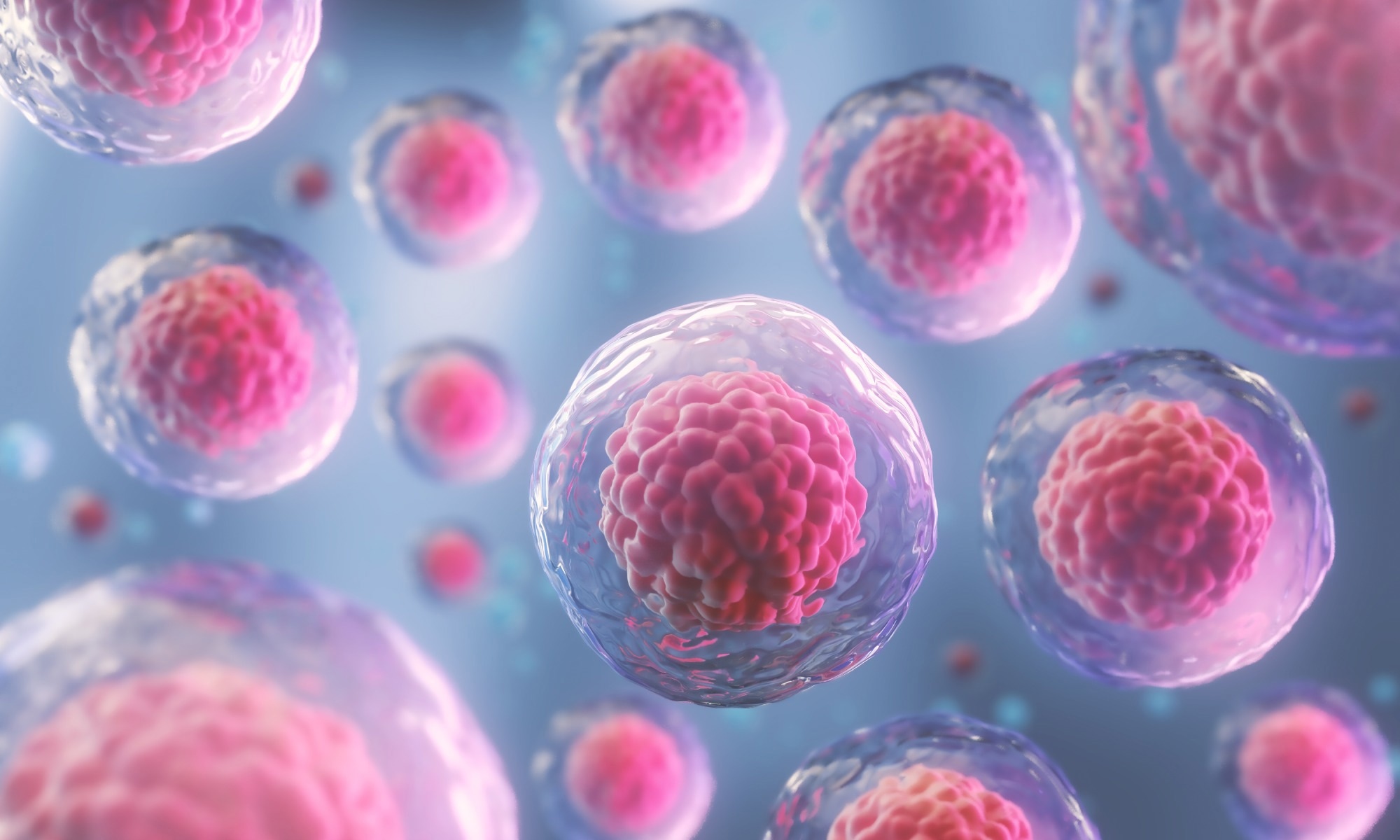In a recent study published in the Cell journal, researchers showed that post-gastrulation synthetic embryos (sEmbryos) could be synthesized outside the uterus using mouse naïve embryonic stem cells (ESCs).
 Study: ¬Post-Gastrulation Synthetic Embryos Generated Ex Utero from Mouse Naïve ESCs. Image Credit: Anusorn Nakdee/Shutterstock
Study: ¬Post-Gastrulation Synthetic Embryos Generated Ex Utero from Mouse Naïve ESCs. Image Credit: Anusorn Nakdee/Shutterstock
Background
Recent studies demonstrated that stem cells cultured in vitro featuring various developmental capacities after being microinjected into mammalian pre-implantation embryos could contribute to extra-embryonic or embryonic tissues.
However, it is technically impossible to return embryos at the post-implantation phase to the host uterus, and suitable platforms for embryogenesis outside the uterus after such embryonic stages have not yet been made available, including for natural embryos. Hence, the developmental capacity of such entities lacks assessments and optimizations. Besides, it is unknown if cultured stem cells could independently develop into fully gastrulating embryo-like entities comprising extra-embryonic and embryonic compartments.
The present study's authors recently developed dynamic and static culture platforms and growth environments enabling continuous recording of natural mouse embryogenesis. It captured embryogenesis from pre-gastrulation to late organogenesis phases outside the uterus. Additionally, the scientists established the ideal growth circumstances for post-implantation mouse embryos, known as Ex Utero Culture Media (EUCM). They demonstrated that the mechanisms of organogenesis and gastrulation in a mammalian species could be jointly and continuously reenacted satisfactorily in a petri dish.
About the study
In the current study, the scientists adapted their newly developed platform for extended ex utero development of natural embryos to create mouse post-gastrulation synthetic whole embryo models, i.e., sEmbryos. The team evaluated whether, when incubated in these simulated ex utero experimental settings, stem cells cultured in vitro could be used to recreate the organogenesis and gastrulation processes from the start. They termed such assumed advanced post-gastrulation embryo-like models as the Synthetic Whole Embryoids (SWEMs) or sEmbryos.
The scientists investigated whether co-aggregation for about five days of the three naïve ESC lines, iGata4, WT, and iCdx2, after pre-treatment with doxycycline (DOX), can produce egg-cylinder-like aggregates in vitro and if the cells segregated according to their transgenic priming. They looked at how well naïve ESC beginning populations could yield egg-cylinder-shaped sEmbryos that could develop into advanced post-gastrulation phases. These populations were then separated into three fractions depending on a brief pre-treatment before co-aggregation.
The authors analyzed whether sEmbryos replicate the morphological alterations occurring throughout natural embryo growth. They assessed advanced sEmbryos for appropriate spatial and temporal expression of lineage markers. Further, the team explored whether advanced sEmbryos can promote self-organization using embryo-derived TSC lines (eTSC). They aimed to well-characterize the formation of extra-embryonic compartments across post-gastrulation sEmbryos.
Finally, the investigators conducted a single cell ribonucleic acid-sequencing (scRNA-seq) evaluation to verify the complexity of the mouse sEmbryo.
Results and discussions
The researchers documented that their recently formulated electrically assisted ex utero embryo culture conditions and platform, which enable accurate and continuous capture of mouse natural gastrulation and organogenesis outside the uterus, also supported ex utero self-organization of post-gastrulation sEmbryos produced by stem cells co-aggregation.
The aggregated naïve pluripotent stem cells cluster during lineage priming to form egg-cylinder-shaped and fully developed embryo-like models. These embryo-like structures accomplished gastrulation and continued significantly farther to establish neural folds, the brain, gut tube, neural tube, somite, beating heart, and progenitors of other organs.
The sEmbryos depicted in the study developed within extra-embryonic membranes similar to natural embryos without the necessity for externally induced specific signaling pathways. These results highlight the naïve pluripotent stem cells' latent capacity to self-organize into sophisticated, organized, whole embryo-like structures outside the uterus.
The authors demonstrate that the trophoblast-stemmed extra-embryonic compartment across advanced sEmbryos could be produced exclusively from mouse naïve pluripotent stem cells and need not be acquired only from TSC lines derived from the natural embryos. They pointed out that the only way to broaden the experimental platforms accessible to investigate early embryonic growth biology from many species was by creating post-gastrulation mouse sEmbryos and only initiating with naïve ESCs.
Conclusions
The study findings indicate that the presently developed sEmbryos harbored both extra-embryonic and embryonic compartments, beginning exclusively from naïve ESCs. For this, non-transduced ESCs were co-aggregated with naïve ESCs transiently expressing Gata4 and Cdx2 to stimulate their priming toward primitive endoderm and trophectoderm lineages, respectively. Comparable to mouse embryos at the E8.5 stage, sEmbryos satisfactorily complete gastrulation, progress through critical growth milestones, and generate organ progenitors inside intricate extra-embryonic compartments.
In addition, the study data demonstrated that SWEMs were not similar to embryos. However, the scientists mentioned that SWEMs may be used in the future as a priceless model for difficult-to-reach temporal windows in early growth embryology studies for modeling human growth abnormalities.
Overall, the present study illustrated that naïve pluripotent cells have the flexible ability to self-organize, functionally reconstruct, and model the whole mammalian embryo after gastrulation.
Journal reference:
- Tarazi, S., Aguilera-Castrejon, A., Joubran, C., Ghanem, N., Ashouokhi, S., Roncato, F., Wildschutz, E., Haddad, M., Oldak, B., Gomez-Cesar, E., Livnat, N., Viukov, S., Lukshtanov, D., Naveh-Tassa, S., Rose, M., Hanna, S., Raanan, C., Brenner, O., Kedmi, M., Keren-Shaul, H., Lapidot, T., Maza, I., Novershtern, N., Hanna, J.H., (2022). ¬Post-Gastrulation Synthetic Embryos Generated Ex Utero from Mouse Naïve ESCs. Cell. doi: https://doi.org/10.1016/j.cell.2022.07.028 https://www.cell.com/cell/fulltext/S0092-8674(22)00981-3